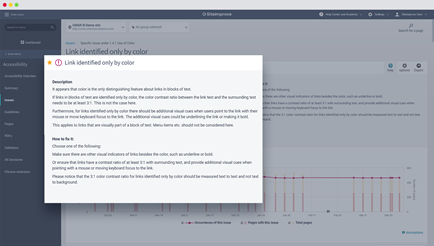The deadline for the 2020 AODA compliance report may have been extended, but the new reporting deadline of June 30th, 2021 is fast-approaching. Is your business ready?
In this blog post, we’ll run through what you need to know before filing your compliance report and a reminder of what’s required to ensure your website is accessible to the 22% of Canadians who identify as having a disability.
Accessibility for Ontarians with Disabilities Act (AODA)
The Accessibility for Ontarians with Disabilities Act (AODA) is an Ontario law mandating that organizations must follow standards to become more accessible to people with disabilities. It became law in 2005, which made Ontario the first in Canada to enact accessibility legislation of this scope.
The AODA has required that private or non-profit organizations with more than 50 employees and all public sector organizations make their website and web content compliant with Web Content Accessibility Guidelines (WCAG) 2.0 Level AA by January 1, 2021. Failure to comply could result in fines of up to $100,000 for each day of violation.
As a result of the challenges placed on many businesses and non-profit organizations due to the COVID-19 pandemic, however, the reporting deadline was extended from December 31, 2020 to June 30, 2021. This applies to private sector organizations (i.e. businesses and non-profit), subject to the AODA, that have 20 or more employees in Ontario.
WCAG 2.0 Level AA compliance
WCAG stands for "Web Content Accessibility Guidelines". WCAG is the international standard for web accessibility, developed by the (World Wide Web Consortium) W3C, the internet standard organization that is also responsible for HTML and CSS standards. Siteimprove is a member of the W3C and actively participates in the standardization efforts within the area of digital accessibility.
There are three levels of conformance within WCAG:
- Level A is the minimum level
- Level AA includes all Level A and AA requirements
- Level AAA includes all Level A, AA, and AAA requirements
If you’re looking for a comprehensive list of what’s required to be Level AA compliant, this checklist from the World Wide Web Consortium (W3C) should help you understand all of the WCAG 2.0 success criteria.
Jennifer Chadwick, our Lead Accessibility Strategist and member of the WCAG Silver 3.0 Working Group, has created a short video on what marketers need to know about WCAG right now.
Filing your compliance report
Before filing your compliance report, it’s important to know that the requirements you must follow vary depending on the type and size of your organization. Make sure to confirm on the Ontario government’s website that you’re clear on the accessibility rules that apply to your business. You’ll also need:
- Your business’ legal name
- Business number (BN9—this is found in your federal or provincial tax return)
- Number of employees
- Name and contact information of your certifier (this is a senior officer with legal authority to say that the report is complete and accurate)
Once you have all the above information prepared, download the accessibility compliance report form from the Ontario government’s website and fill it out accordingly.
According to the AODA office, if you select “no” on your compliance report (meaning that you’re honest that there are still unresolved issues on your website), you won’t get fined right away, but you will receive a call from the AODA asking what your work plan is. This will require that you have an official progress plan or report that indicates when you’ll be fully compliant.
Working towards accessibility compliance
As accessibility laws continue to evolve, it’s important to be able to track and report on progress towards compliance across your sites while also benchmarking your results against industry standards. Using website accessibility software helps to protect your organization from legal and reputational risk by highlighting and prioritizing issues, and documenting your progress as you resolve them.
Put simply, accessibility software makes it easier to tackle issues without being an accessibility expert. They’ll turn accessibility standards into actionable to-dos, and some platforms like Siteimprove will provide explanations of issues, advice on how to resolve them, and references to official WCAG techniques.

Setting your team up for success
Improving your website’s accessibility isn’t something that’s going to happen overnight—and it’s something that you must continue to monitor and work on over time as you add more content to your website and compliance requirements change.
The good news is, there a ton of resources to help you create a more accessible web experience for all. And you don’t have to do it alone!
Here are our top three accessibility resources for you to explore:
- Your guide to web accessibility in Canada: Get a comprehensive overview of accessibility laws across Canada, understand who’s responsible for making accessibility updates on your team, and how your organization can start being more digitally inclusive.
- Free website accessibility checker: Use the Siteimprove Accessibility Checker to test any page on your website for WCAG compliance—with immediate feedback and recommendations.
- Chat with one of our experts: Learn about how we can help you break down accessibility barriers, safeguard your brand reputation, and create an inclusive digital presence for all.


